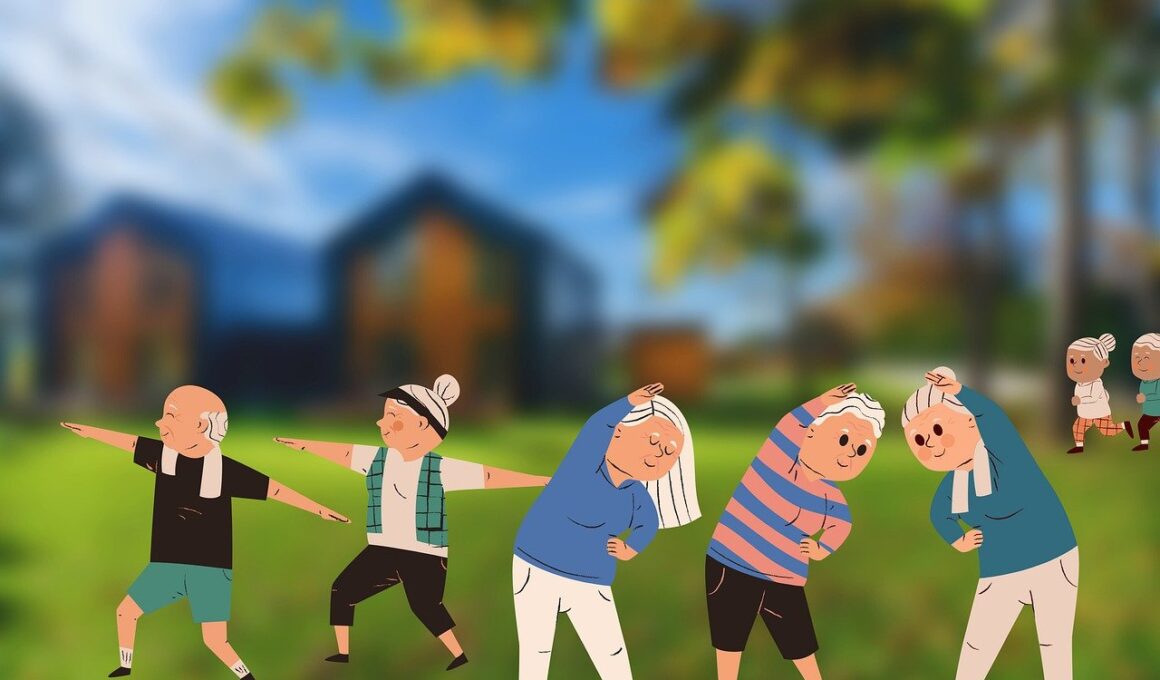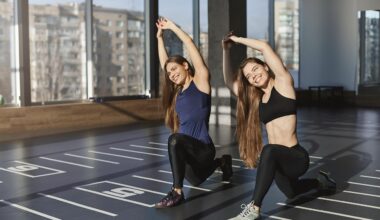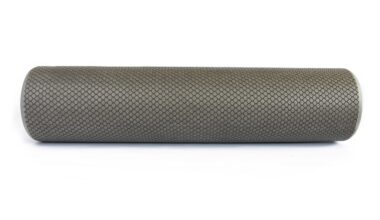How to Start a Functional Fitness Routine After 60
Starting a functional fitness routine after age sixty is an empowering step toward maintaining independence and vitality. At this stage of life, many may experience muscle loss, decreased bone density, and limited flexibility, which can hinder everyday movements. Functional fitness focuses on exercises that boost strength, balance, coordination, and endurance, making daily tasks easier and more efficient. To begin, aiming to incorporate strength training exercises two to three times a week is essential. These should target major muscle groups, using body weight, resistance bands, or light weights. Basic movements include squats, lunges, and pushes. Combining strength exercises with flexibility routines is vital for enhancing mobility. Stretching is beneficial before and after workouts, helping maintain range of motion and preventing injuries. Cardio activities, like walking or swimming, also promote heart health when performed regularly. Be sure to consult a physician before initiating any exercise program, especially if any health concerns exist. Finally, find enjoyable activities to stay motivated! Joining a senior fitness class or partnering with a friend can significantly enhance adherence and enjoyment of your new routine, making fitness fun and sustainable.
Understanding Functional Fitness
Functional fitness is designed to improve the physical performance of daily activities performed regularly. These activities might include bending down to tie your shoes, lifting grocery bags or climbing stairs. Unlike traditional workouts that often isolate individual muscles, functional fitness encourages using multiple muscle groups simultaneously. This type of training is especially important for seniors, as it also targets stability, coordination, and balance, reducing the risk of falls. Exercises such as kettlebell swings, step-ups, and medicine ball throws incorporate movements used in daily life, ensuring a practical approach tailored for older adults. Additionally, incorporating flexibility and range-of-motion stretching as part of your routine can further enhance performance in everyday tasks. Exercises such as yoga or Pilates are often helpful for maintaining and improving flexibility. Remember that consistency is critical; aim to incorporate these elements into your fitness routine several times a week. Over time, you will likely notice improvements in daily activities. With a blend of strength training, flexibility, balance, and cardio, functional fitness increases one’s quality of life and helps counteract the effects of aging, fostering enhanced well-being for years to come.
To create an effective functional fitness routine, it’s essential to set clear goals based on individual needs and capabilities. Conducting a personal assessment is the first step. Determine areas requiring improvement, such as strength, balance, or endurance. Once you identify specific goals, you can organize workouts focused on achieving them. Consider elements like frequency, duration, and intensity. New to exercise? Start slowly, with shorter sessions and lower intensity, gradually increasing them as comfort and strength improve. Scheduling workouts at the same time each week helps establish a routine, making it easier to stay committed. Focus on variety within your routines. Include a mix of strength training, flexibility exercises, balance work, and cardiovascular activities to maintain interest and engagement. Remember that recovery is just as important; aim for adequate rest between sessions, especially with strength training. Additionally, staying hydrated and nourished supports the body through exercise. Prioritize incorporating movement throughout the day when unable to commit to structured workouts. Simple tasks like gardening, walking, or household chores can also contribute positively to your fitness goals.
Incorporating Balance and Flexibility
As aging impacts balance and stability, incorporating exercises focusing on these aspects can be tremendously beneficial. Balance exercises should be a regular component of your routine, as they help prevent falls, a significant concern for seniors. Simple activities like standing on one foot, toe-to-heel walking, and using stability balls can promote balance. Equally significant are flexibility exercises that enhance the range of motion and alleviate stiffness. Incorporate targeted stretching of the legs, arms, and back. Consider using yoga or tai chi classes specifically aimed at older adults, emphasizing gentle movements and mindful breathing to boost physical and mental wellness. Additionally, utilizing props like blocks or straps during yoga can make poses more accessible and comfortable. These practices also encourage the focus on breathing, promoting relaxation, and enhancing mental clarity, which is crucial for holistic well-being. Including balance and flexibility training aids in maintaining mobility, ensuring independence, and facilitating enjoyment in life. As confidence in these skills grows, it opens opportunities for further physical activity, creating a positive cycle of health and vitality.
When developing your functional fitness routine, it is vital to seek professional guidance, especially if new to exercising. Consider working with a certified personal trainer specializing in senior fitness. They can create a personalized plan tailored to your specific goals, abilities, and considerations. In addition, they can demonstrate proper exercise techniques to prevent injuries. Many community centers also offer specialized senior fitness classes or programs, promoting a supportive social environment. Group settings can provide motivation and a sense of camaraderie with peers undertaking similar fitness journeys. Support from friends and family can also play a crucial role in maintaining motivation. Encouragement from loved ones can inspire adherence to the routine, while celebrating progress helps track achievements. Joining local exercise groups or connecting with online communities also cultivates a meaningful support network. As a result, motivation increases, making workouts enjoyable. Building a fitness community fosters accountability and allows for shared experiences and tips among like-minded individuals to reach their fitness goals. Stay open to exploring new activities or classes to keep the routine fresh and exciting.
Nutrition and Recovery
Sustaining a functional fitness routine involves more than just exercise; nutrition plays a crucial role in recovery and overall well-being. As we age, metabolic rates typically decline, making thoughtful nutritional choices essential. A balanced diet rich in protein, healthy fats, vitamins, and minerals aids muscle repair, boosts energy, and enhances overall health. Focus on incorporating nutrient-dense foods, such as fruits, vegetables, whole grains, lean proteins, and healthy fats like avocados or olive oil. Staying hydrated is equally vital, as fluid balance may diminish with age. Aim for adequate water intake throughout the day, particularly before, during, and after physical activity. Establish post-workout meals or snacks containing protein and carbohydrates to facilitate muscle recovery. Simple options include smoothies, yogurt with fruit, or whole-grain toast with nut butter. Lastly, never underestimate the power of adequate rest! Ensure quality sleep and schedule regular rest days within your workout regimen to allow your muscles to recuperate and adapt. With proper nutrition and recovery strategies, you can continuously enhance your functional fitness while supporting health and longevity.
Finally, it is essential to recognize the importance of listening to your body throughout your fitness journey. As you begin a new routine, be aware of how your body responds to each workout. Adjust accordingly if you experience pain or discomfort. Modifying exercises as needed promotes safety and helps to prevent injury. Embrace gradual progress; fitness is not a race, and patience is key. Celebrate small victories, whether completing an additional set, improving balance, or feeling more energized. Keeping a fitness journal can be an incredible motivator, allowing you to track your progress and reflect on your wellness journey. Additionally, don’t hesitate to revisit your exercise goals regularly and modify them as your fitness level evolves. Stay flexible and open to change while finding what resonates best. Above all, emphasize enjoyment and connection. Fitness is not solely a physical endeavor but also a holistic journey of well-being. Share experiences with friends, enjoy nature during walks, or participate in community events to enrich your workouts. Prioritizing functional fitness is a wonderful pathway to greater health and fulfillment as you age gracefully.


